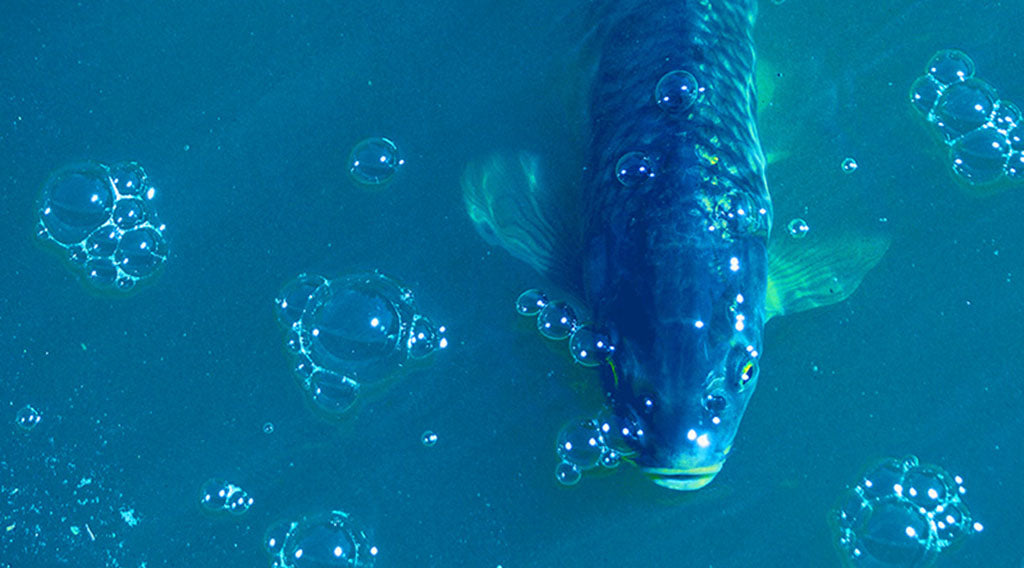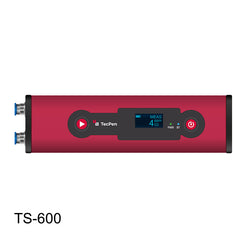
Dissolved oxygen meters make it possible to measure oxygen levels in a liquid, most commonly in water.
For example, the chemical symbol for water H2O tells you that two hydrogen gas atoms bond with an oxygen gas atom to form a molecule of water. But what a dissolved oxygen meter measures is additional oxygen in the liquid not bonded to anything else.
If you think about it, you know there is free oxygen gas in water because fish gills are designed to filter it out and breathe it. Normally, about 10 molecules of oxygen are dissolved in every million molecules of water in a healthy lake or stream. Flow the water down rocks or a waterfall and the oxygen level increases. Let the water sit stagnant or add organic bacteria that consume decaying material, and the oxygen level goes down. The fish can’t breathe.
Oxygen is not only present in water, but in many other fluids. For example, oxygenated chemical compounds are added to gasoline to reduce carbon monoxide and soot during combustion.
Dissolved Oxygen Meter Uses
A dissolved oxygen meter is used in various fields including environmental monitoring, aquaculture, water treatment, and research. Here is a list of industries that use them:
-
Water quality assessment: A dissolved oxygen meter can be used to measure the dissolved oxygen levels in bodies of water, such as lakes, rivers, and ponds, to assess water quality. This information is crucial for monitoring the health of aquatic ecosystems and identifying potential pollution or oxygen depletion.
-
Aquaculture management: Dissolved oxygen meters are essential tools in aquaculture facilities, where they help monitor and maintain optimal oxygen levels for fish and other aquatic organisms. Proper oxygen levels are necessary for the health and growth of fish, and the meter assists in adjusting aeration systems accordingly.
-
Wastewater treatment: In wastewater treatment plants, dissolved oxygen meters are used to monitor the dissolved oxygen levels in various stages of the treatment process. This information helps ensure that adequate oxygen is available for the breakdown of organic matter by bacteria, promoting efficient treatment and reducing pollution.
-
Research and scientific studies: Dissolved oxygen meters are extensively used in research and scientific studies related to aquatic environments. They help researchers understand oxygen dynamics in different ecosystems, study the impact of pollution or climate change on oxygen levels, and evaluate the oxygen requirements of various organisms.
-
Environmental monitoring: Dissolved oxygen meters play a vital role in environmental monitoring programs, where they provide critical data on oxygen levels in water bodies. This information aids in identifying areas of concern, tracking changes over time, and assessing the overall health of aquatic ecosystems.
-
Drinking water analysis: Dissolved oxygen meters can be used to analyze the oxygen content in drinking water sources. Monitoring the dissolved oxygen levels in water supplies helps ensure the water is safe for consumption and meets regulatory standards.
-
Industrial processes: Some industrial processes, such as fermentation or chemical reactions, require the presence of oxygen. Dissolved oxygen meters are employed to monitor and control the oxygen levels in these processes to optimize efficiency and ensure proper operation.
-
Aquatic sports and recreation: Dissolved oxygen meters are occasionally used by divers and snorkelers to measure the oxygen levels underwater. This can help ensure safety and prevent hypoxia-related issues during extended dives.
What is the Normal Level of Dissolved Oxygen in Water?
Dissolved oxygen is measured either as mg/L or as a percent dissolved oxygen (%DO).
- mg/L is a common conversion for parts-per-million in water.
- 100% DO means that the water is holding as many dissolved gas molecules as it can in equilibrium. At equilibrium, the percentage of oxygen in the water would be the same as the percentage of oxygen in the atmosphere (about 21% by volume).
For reference, at 25°C, water at 100% DO will have 8.3 mg/L or 830 ppm of dissolved oxygen.
Healthy water will have dissolved oxygen concentrations above 6.5 mg/L and between about 80-120 %DO. At levels below 5 mg/L some fish will be stressed, and below 4.0 mg/L almost all fish will die.
Dissolved Oxygen Sensor
While there are many ways to measure dissolved oxygen (DO), one of the most accurate is with an optical sensor. It measures the DO concentration in water based on the principal of quenching of luminescence in the presence of oxygen. A special layer of film coated with a dye is exposed to light (excited) and exposed to air or liquid with oxygen. The amount of oxygen is proportionate to the lowering (quenching) of the excited state of the dye. The more quenching recorded, the more oxygen that is present.
Optical dissolved oxygen sensors offer several advantages. They are less susceptible to light source and detector drift as well as drift due to dye degradation or leaching.
At CO2Meter we offer both a handheld dissolved oxygen sensor as well as a permanent mount sensor designed for industrial production applications.
TecMicro DO Sensor
The TecMicro Dissolved Oxygen Sensor can measure oxygen levels from a few parts per billion up to 40mg/L in liquid depending on the model. This makes them useful for fermentation, liquid packaging, breweries, wastewater, algae or aquatic applications.
Watch a video of the TecMicro DO Sensor being tested.
Advantages of the TecMicro Sensor
- Can be connected to a PLC, RPI, Arduino or any other control/monitor system
- Permanently installed process instrumentation sensor
- Liquid measurement in flow (pipeline) or static (sealed tank) conditions
- Clean in place or sterilize in place using high heat or chemicals
- Remote calibration using a control gas or liquid for automated calibration cycles
- RS485 electromagnetic immunity
- The TecMicro works under high pressure 50 Bar / 750 Psi.
- Both gas and liquid models available using the same RS485 interface
Dissolved Oxygen Meter
The TecPen Portable Dissolved Oxygen Meter provides accurate O2 measurement in mg/L or parts per billion (ppb) in water and other liquids. It is useful in measuring trace oxygen levels from 0-5% for biological or industrial applications, or for quality control in packaged liquids.
The TecPen DO Meter works by utilizing a micro-pump that draws a liquid sample inside the device. Once the oxygen level has stabilized, it can be read on the screen or saved in internal memory for later downloading and data analysis.
Because of its advanced optical chemical sensor, the TecPen dissolved oxygen meter can take a measurement in 3 seconds. It is designed to last for years.
For more information about dissolved oxygen meters and sensors contact us today.








